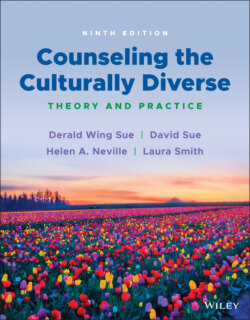Читать книгу Counseling the Culturally Diverse - Laura Smith L. - Страница 93
THE DAMAGING IMPACT OF POVERTY
ОглавлениеResearch indicates that life in poverty is related to higher incidence of depression (Lorant et al., 2003), lower sense of control (Chen, Matthews, & Boyce, 2002), poorer physical health (Gallo & Matthews, 2003), and exclusion from the mainstream of society (Reed & Smith, 2014). When therapists come from middle‐ to upper‐class backgrounds, it can be difficult for them to relate to the circumstances and hardships affecting their client who lives in poverty. Certainly, most therapists would be expected to have sympathy for people in poverty and to know that they face material deprivations; however, many mental health professionals will not be aware of the additional stressors likely to confront clients who are excluded and stigmatized based on their poverty, nor do they fully appreciate how those stressors affect their clients’ daily lives (Smith, 2010).
Life in poverty means surviving obstacles like low wages, unemployment, underemployment, little or no ownership of property or other wealth, and lack of reliable food reserves. Meeting even the most basic family needs is precarious, and the resources and opportunities that people at other income levels take for granted—such as safe housing, clean water, and adequate health care—cannot be taken for granted. Moreover, people living in poverty are subject to daily experiences of discrimination and bias. People at higher social class positions often (consciously or unconsciously) stereotype the poor as being lazy, inferior, drug‐abusing, or unintelligent, and frequently seek to distance themselves from the poor as a result (Lott, 2002). These stereotypes are manifestations of classist bias, and when people in poverty internalize society's widespread anti‐poor attitudes, feeling of self‐blame and inferiority can develop. Therapists who are not alert to the possibility of internalized classism may unwittingly attribute these feelings entirely to the individual or cultural characteristics of the client.
